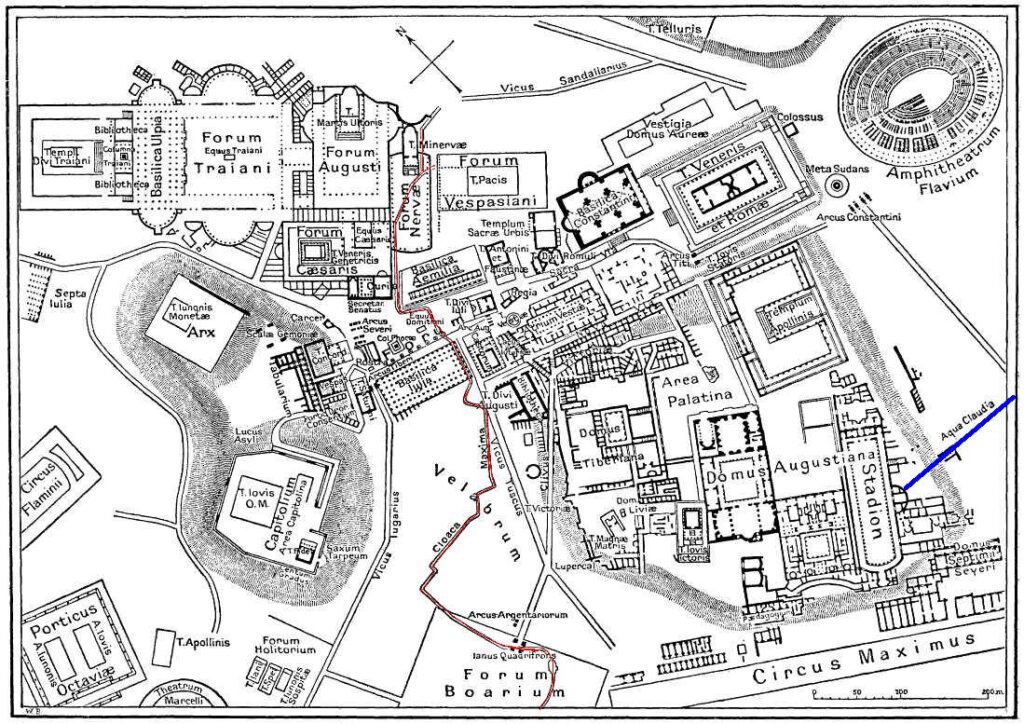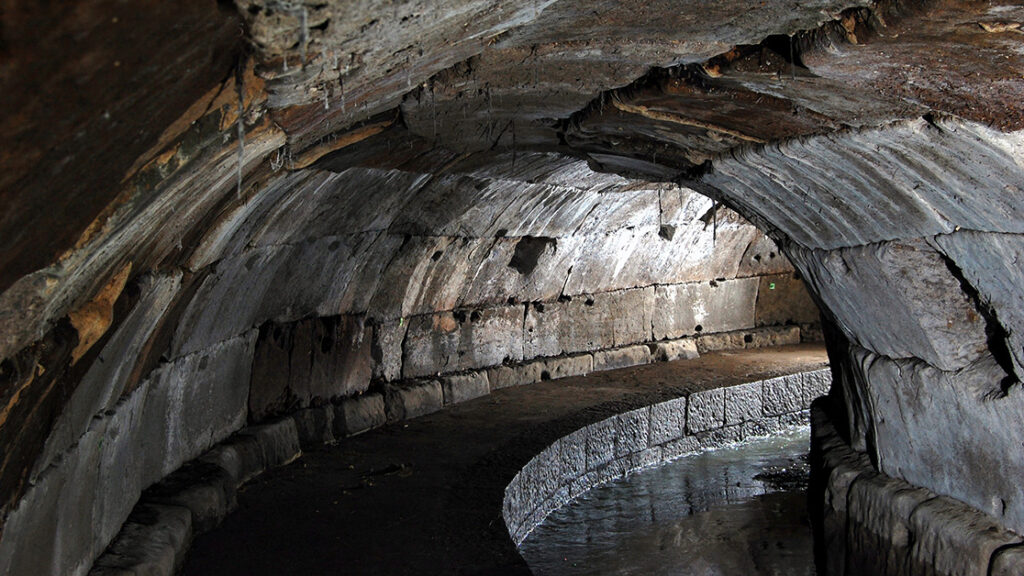Urban water and sanitation systems in ancient Rome,
The massive domed tunnel is built from huge blocks of volcanic rock and limestone, and is large enough for a person to stand in.
But it wasn’t always this massive. In ancient Rome, sewerage began as an open drain that followed the path of an existing stream.
It was lined with stones to improve its efficiency, and carried water through the city’s central forum and then into the Tiber River.

As Rome grew, so did the aqueduct, with changes in direction corresponding to major new civic buildings.
And the addition of man-made channels leading from it.
In the second century BC, when sanitation and cleanliness became more important to the city,
The aqueduct was covered, becoming Rome’s first true underground sewer system.
Sanitation in ancient Rome was part of a sophisticated urban water system.
In the first century AD, Marcus Agrippa traveled the entire length of the route,
He was a Roman statesman, soldier, architect, and the city’s first water commissioner.
Agrippa oversaw the expansion and improvement of hydrology in Rome
By adding new canals, improving street cleaning, and expanding the sewage system.
The new channels were directed to the sewers after feeding public baths, fountains and palaces.
The continuous supply of running water kept the sewers clean and unobstructed.

The purpose of sanitation in ancient Rome
Unlike modern sewer systems, the primary purpose of sewers in ancient Rome was to transport surface water.
Human waste was dumped on the street or transported to agriculture, in effect, the sewage system
Mainly serving public areas of the city,
It provided little or no sanitary relief to crowded residential areas.
However, this system was a marvel and a source of pride for the Romans.
Tours were sometimes organized inside the major tunnels.
In his great book Natural History (79 AD), Pliny the Elder wrote about sewers:
“In the streets above, huge blocks of stone are dragged, and yet the tunnels do not collapse,
They are bombarded by falling buildings…
The earth shakes from earth tremors;
But in spite of everything, for 700 years since the time of Tarquinius Priscus, the canals have remained almost impregnable.”
Hundreds of years later, Lewis Mumford, in The City in History (1961),
expressed similar admiration for the durability and value of the tunnels.

With a record of continuous service spanning more than twenty-five centuries,
The sanitation structure of ancient Rome proves that in city planning,
Low initial costs do not necessarily indicate economy
In these terms, it has been shown that sanitation in ancient Rome
It is one of the cheapest pieces of engineering on record.
It is worth noting that the Romans were not the first civilization to build underground sewers.
The Egyptians were already pioneers in the use of domed underground drains.
Today, only a little runoff flows through what remains of Maxima’s sewer.
We are still amazed by this huge project.
Which is at the same time an architectural and engineering achievement and evidence of wise political leadership.
See More: Sanitation in ancient Rome
